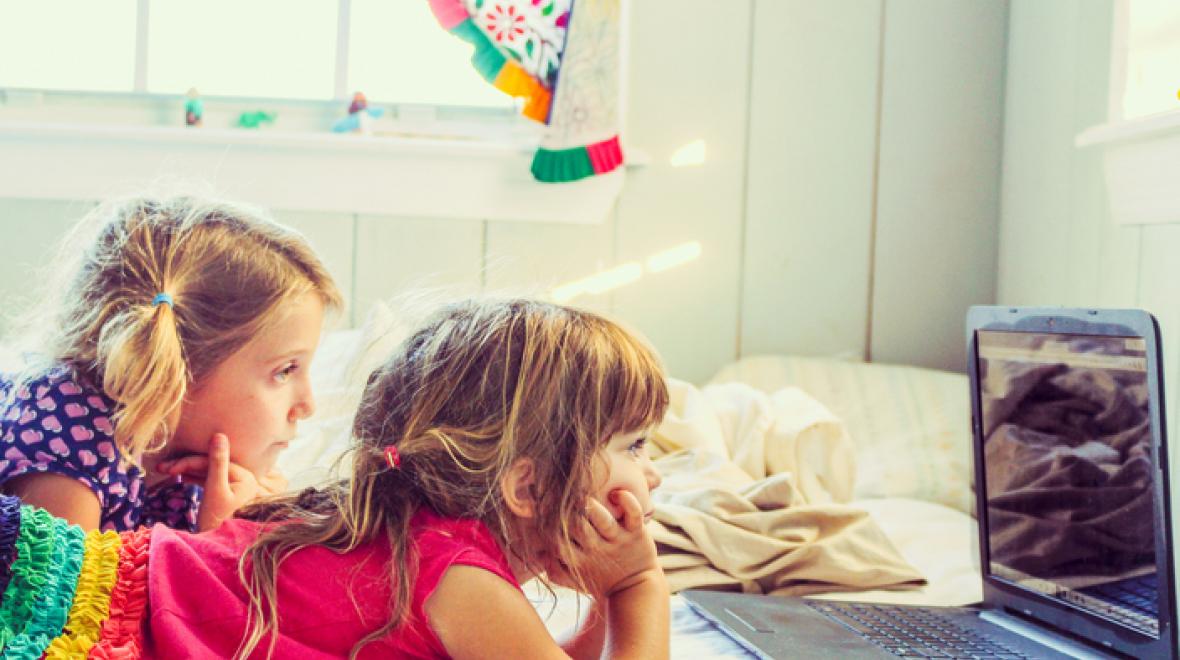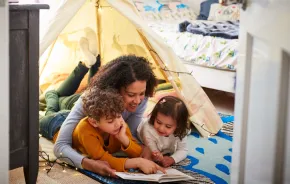
Troubled by his sons’ addict-like behavior toward their cell phones, Tim Farnum researched the side effects of screen time on children. What the Colorado doctor learned — too much screen time has been linked to symptoms like sensory overload, lack of restorative sleep, a hyper-aroused nervous system, diminished ability to recognize emotions and genuine addiction — troubled him so much he decided to change the law. The state ballot initiative, which Farnum is currently collecting signatures in support, seeks to ban cell phones for kids younger than 13.
While such legislation may seem unlikely in tech-driven Seattle, Farnum is far from alone in wondering what to do about kids and devices.
Sometimes it seems like they use them for everything: research for school projects; marathon texting sessions with friends; letting us know they’re safe when they’re out. And so often we find ourselves worrying that video games and YouTube are replacing playing outside with friends (let alone what screen time is doing to their health). Where do we even begin in setting appropriate limits, and how do we enforce them when we do?
Emily Cherkin can help. A parent educator and coach at the Hallowell Todaro ADHD Center in Seattle, Cherkin runs a four-week course for parents who want to better balance technology and family life. A former teacher, Cherkin is a frequent speaker on screen use and media issues at schools around the region. We spoke with her to get some summer vacation device advice.
Make media mindful — Most of the technology our kids use daily didn’t exist when we were kids, which means that everyone is still figuring out boundaries. “This is my job, and I still have arguments about screen time in my house,” says Cherkin, whose kids are 9 and 6.
The specific media-use rules you choose may be less important than being conscious about the role technology plays in your family’s life.
“Mindfulness is a buzzword, but that’s really what we’re talking about. Unplugging is about making a conscious choice to disconnect physically and metaphorically for a period of time,” says Cherkin. “It’s different for every family and every kid.”
Write it down — “It’s totally appropriate to rethink summer screen rules,” says Cherkin. “I encourage parents to have a conversation with their kids and to replace judgement with curiosity.” Often parents are quick to dismiss their kids’ use of technology as wasting time, but it’s more valuable to try to understand why your child is worried about breaking their Snapstreak.
“Ask, ‘What do we want for our family this summer?’ and use the lens of your family’s values,” she says. Eliminating screen time isn’t necessarily the goal. “If you want time together, that could be family movie night — as long as everyone is watching together and no one is on their phone during the movie.” Similarly, Cherkin adds, “It’s OK for a child to say [he or she] wants to binge a series or reach a certain level in a game. That’s not an automatic conflict.”
Cherkin’s 9-year-old wrote a proposal for his summer screen time rules, complete with start and end dates. An online family media planning tool can provide a framework for discussions with your children. Having everything in writing makes it easier to stick to your guns when kids challenge the rules. Cherkin suggests posting the rules next to the TV and any place else devices are stored.
Walk the talk — “Many parents are reluctant to alter their own habits, but healthy media use is for the whole family, not just for kids,” Cherkin says. While it’s true that kids, whose neural pathways are still developing, are more susceptible to addiction than adults, Cherkin says, “It’s really powerful for parents to model limits.”
But what if you’re online to get work done? “Live your life out loud,” Cherkin recommends. “Narrate what you’re doing. We do this with babies, saying ‘Now I’m changing your diaper.’ Parents can say, ‘Mommy is using her phone to schedule a playdate,’ so kids know you’re not just scrolling Instagram.” This models healthy use to your kids and helps you notice your own habits.
Set healthy limits — When does screen time become too much? The answer, says Cherkin: “As with any form of addiction, when it starts to affect other parts of your life.”
Since kids don’t have the executive function skills to control their own screen use, families need to have clear rules. But it doesn’t mean media rules have to be perfectly enforced; after all, summertime is supposed to be relaxed. “Think of the 80/20 rule,” Cherkin says. “It’s OK if you don’t always accomplish your rules. But if your kid is on social media eight hours a day, what’s left? Are they still doing sports or having in-person interactions?”
A lot of managing devices comes down to identifying appropriate times and places for screen use. No screens during mealtimes is a common rule because it has physical and familial benefits. “Start with phones out of the bedroom,” Cherkin adds. Although kids (and many parents) will kick up a fuss, there are many reasons to sleep away from the phone, ranging from ease of supervision to improved sleep.
Prioritize presence — According to Cherkin, one of the easiest and most effective ways to take control over media is to turn off alerts.
Studies have shown that pausing to check a phone notification disrupts attention and concentration for several minutes. “Treat looking at a text during a conversation as an interruption, and apologize,” Cherkin says. “Texting is giving permission to interrupt you to someone who is not even there.”
By turning off alerts, we prioritize our present company and activities. Most of us are on our phones often enough that we rarely miss messages anyway.
(Ful)fill your time — It’s easy to focus on the rules that restrict kids’ access to devices but Cherkin says, “It’s helpful if the rest of their life is full.” Taking a walk or bike ride together can sound like trite advice — until you try it. When the whole family is outside, interacting with the world and each other, the need for digital distractions lessens. Have regular check-ins with your kids throughout the summer to see how the rules are working and identify the activities that everyone enjoys.
And while it might seem ironic, if you want to get your kids off the couch, there’s an app for that. Play Unplugged is a free online program that lets kids earn badges for completing activities like catching bugs and building a fort (registration required). Common Sense Media, which sponsors the #DeviceFreeDinner challenge, also has ideas for real-world activities based on kids’ TV shows. An Android app that shuts down your phone for a pre-determined time period (from 30 minutes to one month) takes technical assistance a step further.
Go cold turkey — If you want a clean break from old habits, taking a no wi-fi vacation can be a mental reboot, with an unfamiliar environment making it easier to test new behaviors. Some families enjoy completely unplugging so much that they institute a regularly recurring “devices day off.”
However, Cherkin suggests that incremental steps lead to more lasting changes than a “digital detox,” just as a healthy diet has more impact than a fast. “It may be fun to take a Saturday off from technology, but don’t expect an epiphany,” she says. “Be mindful. Ask: ‘What are we hoping to achieve?’”
Reconsider when school starts again — “Part of being mindful is being seasonal,” Cherkin adds. “There can be ‘summer rules’ and ‘school rules.’” To do this, she recommends making a revised media plan in the fall, and checking in as a family often in the early weeks of school.
“This isn’t easy,” she says of managing screen time. “Like every other issue in parenting, we’ll screw up sometimes. But it’s important to keep talking, involve kids in the conversation and be willing to look at our own use.”











